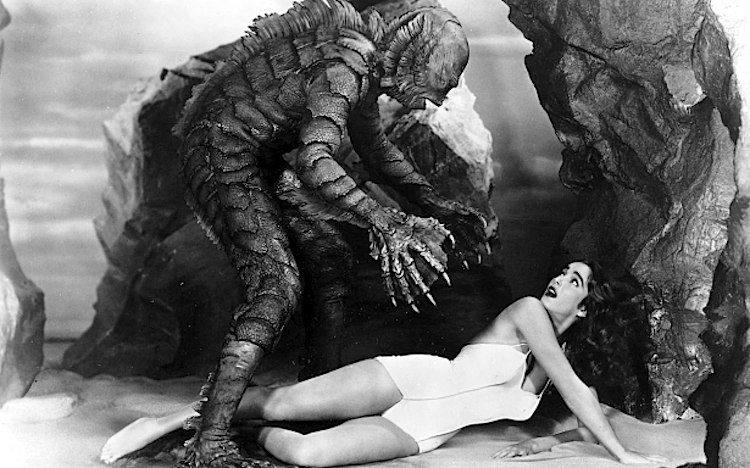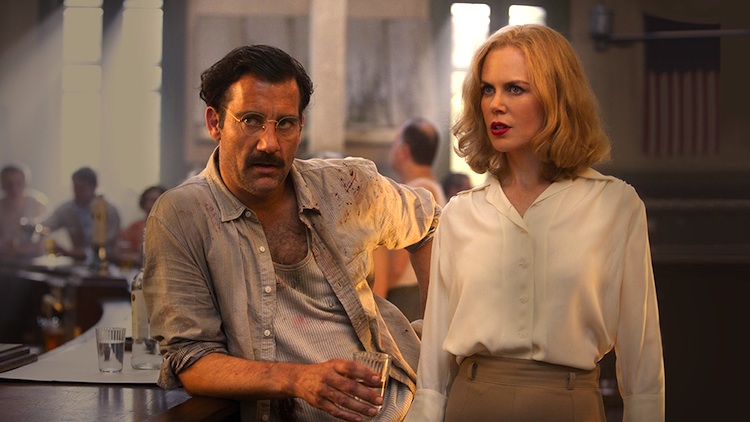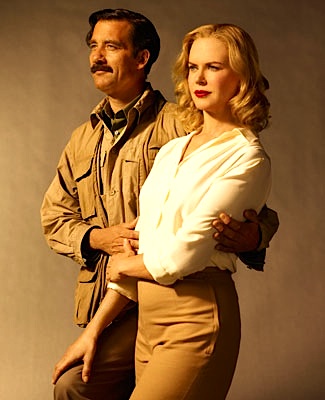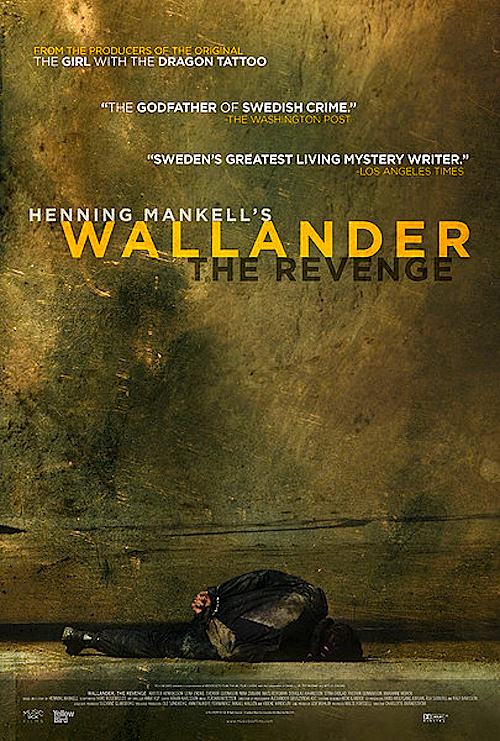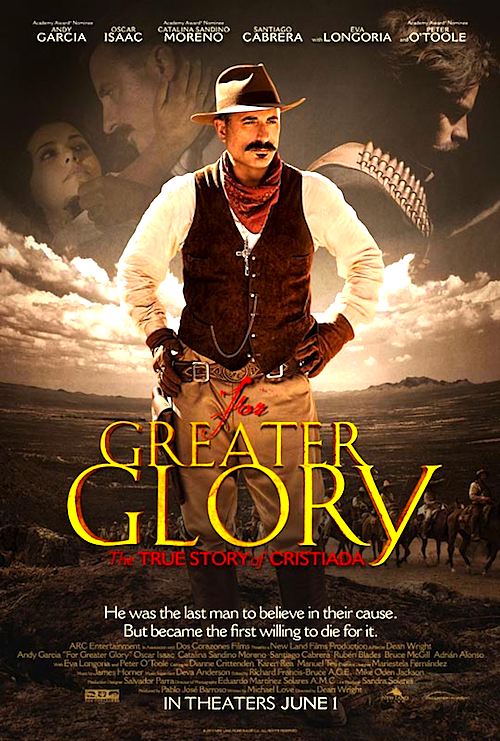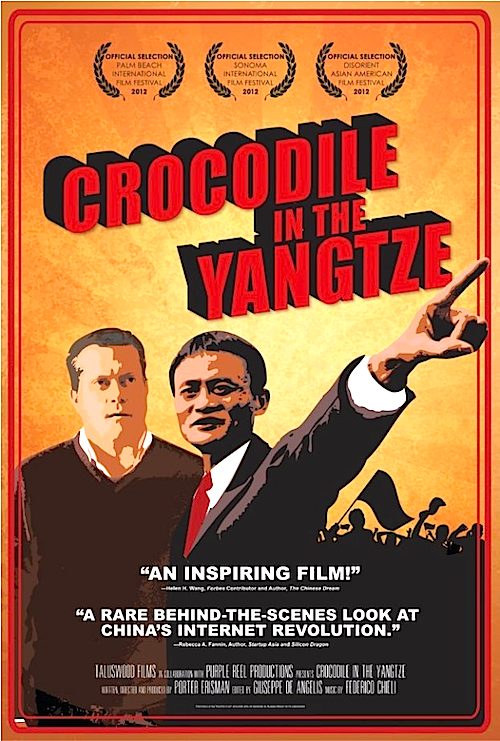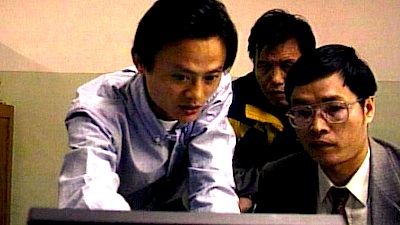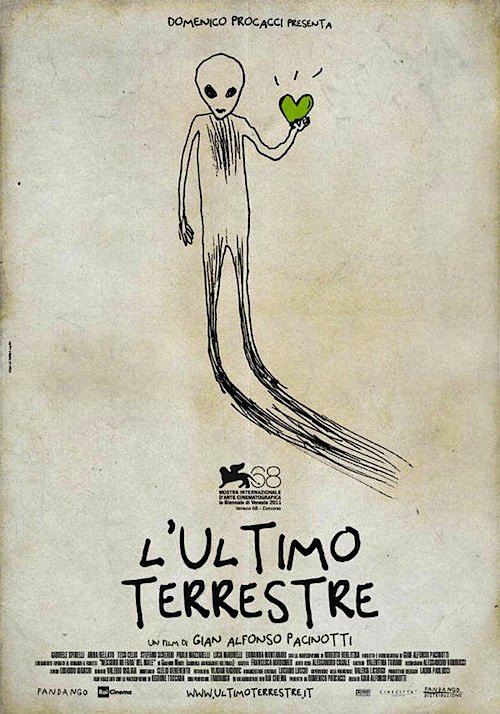[Editor’s Note: the article below appears today on the front page of The Atlantic.]
Chatting with Julie Adams, the star who helped set the formula followed by the new Piranha 3DD.
By Jason Apuzzo & Govindini Murty. From piranhas and sharks to brain-eating crabs and giant leeches, Hollywood has provided some frightening and improbable reasons over the years for why pretty girls in bikinis should stay out of the water. Long before this week’s Piranha 3DD or even classics like Jaws, however, it was the lustful Gill Man from 1954’s Creature From the Black Lagoon who first made young women think twice about going swimming.
A beauty-and-the-beast tale of an aquatic humanoid who falls for a female scientist during a research expedition to the Amazon, Creature helped inspire the 3D science fiction craze of the 1950s. It also made its young star, Julie Adams, sci-fi’s first pin-up girl—and launched her distinguished career in film, TV, and on stage.
Still vibrant and active at age 85, Adams remains a popular draw at sci-fi and classic film conventions, where she’s currently promoting her lively new autobiography, The Lucky Southern Star: Reflections From the Black Lagoon, which she cowrote with her son, Emmy Award winning editor Mitch Danton.

Over her lengthy and colorful career, Ms. Adams has seduced Elvis Presley and Dennis Hopper on screen, played John Wayne’s wife, tussled in a burning basement with Barbara Stanwyck, and played the love interest to James Stewart, Rock Hudson, and Charlton Heston. She’s been directed by Anthony Mann and Raoul Walsh—and more recently has appeared in projects like Oliver Stone’s World Trade Center and TV shows like CSI and Lost.
Yet Adams still remains best known for her role as Kay Lawrence, the sultry brunette in a plunging one-piece pined over by the Gill Man in Creature.
•
What was your initial reaction upon getting offered Creature?
[Laughs.] Well, I wasn’t thrilled, you know, and I thought I could turn it down, but then I would go on suspension [from Universal Pictures] and wouldn’t get paid … and so I thought, well, the studio wants me to do it, what the hey, it might be fun. And it was!
What was director Jack Arnold like, and how did you two get along?
I got along great with Jack Arnold, and he was a wonderful director. He was very low key, he seemed almost casual—but it was very easy to work with him. Any suggestion he made always made sense.
Did you interact much with William Alland, the producer?
Not that much, because he was not on the set that much—but I liked him. He was always very nice to all of us.
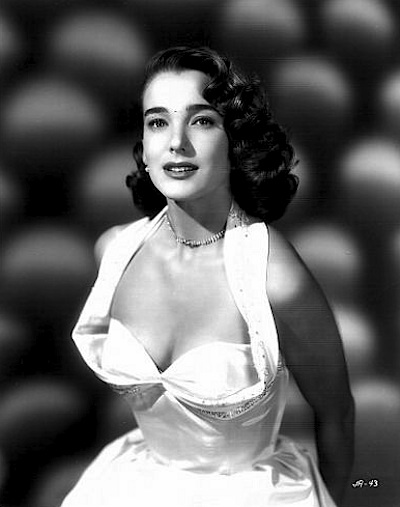
Alland played the reporter in Citizen Kane, and he apparently attended a dinner party hosted by Orson Welles while they were shooting Kane. Welles’s lover Dolores Del Rio was also there, and she brought along Mexican cinematographer Gabriel Figueroa. Figueroa had heard a legend as a child about an Amazon water creature, half-man and half-lizard. And the story went that there was an Amazon village that would bring a virgin to the creature once a year in order for the creature not to terrorize the village.
Poor virgin!
Right. So Alland went home later and wrote Figueroa’s story down. And then about 12 years later the whole 3D craze started, and at that point he pulled out the story and started to make a movie of it.
That’s a very interesting story—it fits in, in a wonderful, cuckoo way.
>>>FOR THE REMAINDER OF THIS ARTICLE, PLEASE VISIT The Atlantic.
Special Note to LFM Readers:
Julie Adams’ autobiography The Lucky Southern Star: Reflections From the Black Lagoon is available exclusively at her website . Featuring 300 photos of the gorgeous Adams and her famous co-stars, the book provides a charming look at Adams’ experiences working with movie greats like James Stewart, Tyrone Power, Ida Lupino, and many others. While supplies last, the book also comes with a bonus CD of the iconic score for Creature From the Black Lagoon, re-recorded by Monstrous Movie Music and featuring music by Henry Mancini, among others.
Posted on May 29th, 2012 at 10:13am.
